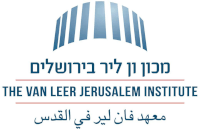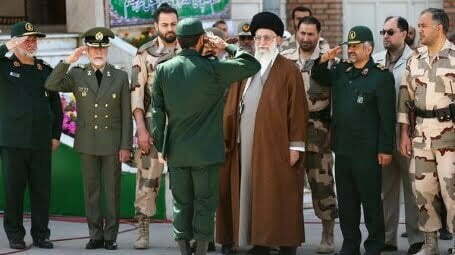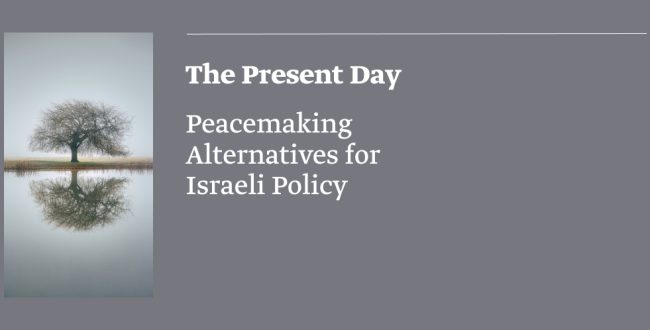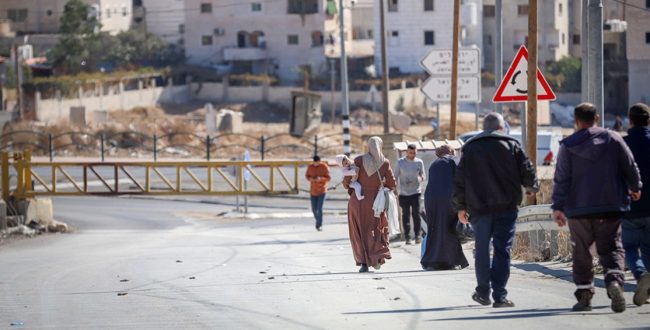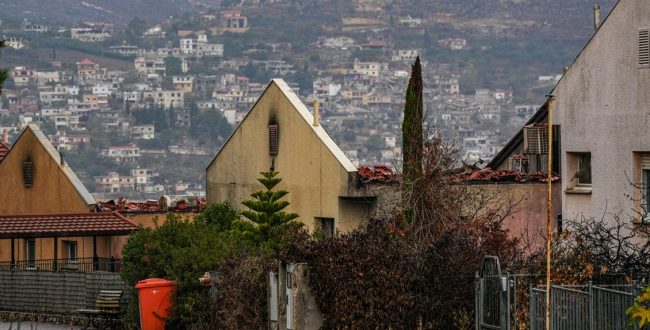We do not yet know whether Iran and the six major world powers will be able to sign a nuclear deal by the end of July. Despite the mutual understanding reached between Iran and the P5+1 group in Lausanne, some issues remain unresolved.
According to Western diplomats, Iran agreed to continue operating 6,500 of the 9,400 centrifuges currently in operation and retain 300 kg of low-grade enriched uranium. More centrifuges will be reactivated after 10 years.
The main issue still on the table appears to be Iran’s demand to fully and immediately lift all sanctions. Iranian leaders have stressed that that a deal would depend on immediate removal of the sanctions.
Nuclear power as insurance for the regime
Whether the deal goes through depends largely on Iran’s Supreme Leader, Ayatollah Khamenei. If he is open to strategic compromise, Iran will be able to meet the West’s minimum demands and postpone its ability to achieve nuclear “breakthrough” for a year at least. Yet Khamenei remains adamant that military nuclear potential is a crucial insurance policy for the Islamic regime’s survival. Although the Iranian nuclear program was put on hold following the 1979 Islamic Revolution, it was revived in the 1980s to counter Iraq’s efforts to develop unconventional weapons. In the late 1980s, statements made by several Iranian leaders implied that Iran might develop nuclear power in certain circumstances, or at least did not rule out the option. Two considerations appeared to be paramount: that nuclear power can decide a war, and that it can effectively deter Iran’s enemies. In the 1990s and onwards, these declarations all but vanished, apparently once Iran recognized the risk involved in inviting pressure to curb its nuclear aspirations.1
Since the Islamic regime sees nuclear potential as vital insurance, sanctions cannot go far in changing Iran’s nuclear strategy. While they played a significant role in Iran’s decision to re-enter negotiations, it is highly doubtful that tightening them will force Iran into forgoing the military option. In fact, heavier sanctions and an economic crisis that would pose a serious threat to the regime might actually increase pressure within Iran for a nuclear breakthrough that would deter the West to the point of lifting the sanctions.
Khamenei maintains that the nuclear program is nothing but an excuse for the West to weaken and isolate Iran in order to achieve its main strategic goal: overthrowing the Islamic regime. In a speech marking the 35th anniversary of the Islamic Revolution, he emphasized U.S. efforts to do so: “One of the things which American politicians say in their speeches to our officials is that they do not intend to change the regime of Iran. […] [T]hey are lying. If they could, they would not hesitate even for a moment to destroy the foundation of the Islamic Republic.” In a speech before the Basij militia of the Revolutionary Guard in late 2014, Khamenei reiterated his position that the U.S. is using the nuclear issue as an excuse to thwart Iran’s technological development. At another opportunity, he stated that “the efforts by the political communities of the world to magnify the threat posed by a nuclear Iran are based on nothing but a lie because they are afraid of an Islamic Iran, not a nuclear Iran.”
At the height of nuclear talks with the West, the Supreme Leader’s official website ran an infographic titled “Nuclear Power Is an Excuse”. It featured nine burning matches, each representing a particular Western claim against Iran. These included Iran’s attitude to Israel, its support for the “resistance camp” in the region, the country’s missile program, and the human rights situation there. According to the Iranian leadership, these claims are meant to justify future Western policy towards the Islamic republic, even if the nuclear issue is resolved. Khamenei notes that agreeing to nuclear disarmament of Libya in 2003 did not save Mu’amar Qadafi when Western countries helped topple him. He cites this as validation for Iran’s refusal to meet demands in return for Western benefits, which are no more than“a lollipop to a child”.
Ayatollah vs. president: centrifuges or the economy
Although Iran’s leaders share these basic views, Supreme Leader Khamenei and President Hassan Rouhani are at considerable odds over the emerging nuclear deal. The president’s political future rides heavily on it, as lifting the economic sanctions would help him fulfil his commitment to improve Iranians’ well-being. Rouhani knows that ending the major economic crisis in which Iran has been sunk for several years depends on removal of the sanctions, even at the cost of nuclear compromise. He acknowledged this in a declaration made during the election campaign, and repeated in a speech before students at Tehran’s Shahid Beheshti University in December 2013, in which he stated that the centrifuges should keep turning as long as the lives of citizens and the economy moved forward. In a speech he gave at a Tehran conference on the Iranian economy in early 2015, Rouhani said: “Our ideals do not depend on the number of centrifuges”.
The decreased sanctions following the Geneva interim agreement, coupled with the government’s responsible economic policy compared to Ahmadinejad’s populist line, have yielded some economic improvement. Inflation is significantly lower, the unemployment rate has dropped, and there is evidence of growth. However, the Iranian market is still facing a serious crisis, exacerbated by the plunge in oil prices in recent months. The low prices have already forced the government to make budget cuts, effective as of Iran’s new year in March 2015, and to take measures such as increasing tax revenues and cancelling the monthly cash payments that in 2010 replaced government subsidies for energy products for millions of higher income citizens.
While President Rouhani recognizes the need for a permanent deal with the West, Khamenei insists that the best way to deal with the Western sanctions is an “economy of resistance” that will reduce Iranian dependence on foreign actors and increase self-reliance. In a meeting with the people of East Azerbaijan in February 2015, he spoke of decreasing reliance on oil and developing privatization as means for economic improvement, stating that an economy of resistance would bolster Iran’s ability to withstand external threats and sanctions.
The differences in approach between the ayatollah and the president are also evident in their attitudes to the U.S. Recognizing the need to reach a nuclear deal with the West in order to remove the economic sanctions forced Khamenei to permit Rouhani’s negotiation with the U.S. Yet unlike the president, who sees direct talks with the U.S. as a potential precursor to a more open policy towards the West, Khamenei remains steadfast in his opposition to any possibility of normalization. Over the last year, he vehemently attacked the U.S. several times, voicing his lack of trust. In a speech early this year, he once again referred to the U.S as “Satan” and claimed that the nuclear talks proved U.S. hostility towards Iran, Islam and the Muslims.
Khamenei’s basic distrust of the West, and especially of the U.S., is the driving force behind his adamant refusal to a two-phase nuclear deal: a framework agreement and a detailed, comprehensive agreement by July 1st. In a meeting with Iranian air force commanders, Khamenei stated that based on past experience, the world powers would exploit the period between agreements to avoid implementing the deal on various pretexts. Iran’s demand to fully and immediately remove all sanctions as soon as the deal is signed can also be partially explained by Khamenei’s fear that the West will not meet its commitment when the time comes. The ayatollah recently reiterated his claim that even if Iran bowed to Western demands, its enemies would not lift the sanctions as they are “opposed to the essence of the Revolution”.
Khamenei’s core beliefs and his deep distrust of the West may make it hard for him to sign the nuclear deal under way, despite its major benefits for Iran. While the agreement recognizes Iran as a threshold nuclear state and is set to extend the time it will need to achieve nuclear weapons – given a political decision – by a year at most, it will also severely restrict Iran’s nuclear activity for at least a decade. This is an especially meaningful timeframe for Khamenei, who likely will not live to see the agreement expire. While he may go down in history as the man who tenaciously led his country to become a threshold nuclear state, he may also be branded for agreeing to “drink from the poisoned chalice” and to accept massive restrictions on Iran’s long-developed nuclear program.
A nuclear deal: concerns and opportunities
For Israel and the West, the nuclear deal under way raises justified concerns. It leaves Iran with nuclear infrastructure and a promise that all restriction of its nuclear activity be removed in 10-15 years at most. Also, lifting the economic sanctions in the first phase of implementation will make it very hard for the West to respond, should Iran violate any part of the agreement. In an interview with Al Arabiya, U.S. Secretary of State John Kerry promised that if Iran violates the agreement, “then the military option that is available to the United States is ready and prepared to do what it would have to do”. But U.S. hesitancy over North Korea, for example, casts serious doubts over its ability to mobilize the international community into decisive action against Iran in such a scenario. North Korea completed its nuclear armament program despite international opposition, which was too feeble to even penalize the country for conducting nuclear experiments.
A deal would legitimize Iran’s status as a threshold state, resolving a decade-long debate among Iran researchers over which of the two trains, nuclear development or sociopolitical change, would be the first to reach its final destination. In his recent address to Congress, Israeli Prime Minister Netanyahu called the ten year duration of the expected agreement “the blink of an eye in the life of a nation”. He expressed disbelief that the Iranian regime would change any time soon, especially since “it can enjoy the best of both worlds: aggression abroad, prosperity at home”. Netanyahu is right to doubt an imminent regime change in Iran. However, as a deal that would remove all nuclear infrastructure is not on the cards, the opportunity to reduce the Iranian threat may very well lie in political processes taking place within Iran, which may gain momentum once the sanctions are lifted.
Thirty-six years after the Islamic revolution, Iran is sunk deep in an economic crisis and is grappling with growing public frustration with the regime’s institutions. The economic crisis is the combined result of structural problems in the Iranian market, such as reliance on oil revenues, a weak private sector, and widespread corruption, of faulty economic management, and of the repercussions of the sanctions. At the same time, the Iranian public is growing increasingly disenchanted with the values of the Revolution, and the younger generation is demanding liberty and solutions to their problems.
Easing the sanctions will offer a chance to improve Iran’s economy, thereby strengthening the regime. Yet their complete removal may, at some stage, act as a double-edged sword for the regime: while easing citizens’ financial difficulties, it may also increase their exposure to Western influence and strengthen the middle class, which is considered a major agent of political change. If Rouhani manages to clinch a deal, it may appease the public but may also raise expectations of far-reaching civil reform that could undermine the values of the Revolution. Re-entry of foreign companies into Iran’s markets might even jeopardize the financial interests of the Revolutionary Guards, who stepped into the vacuum left by Western withdrawal from financial projects in Iran. It is unlikely that the Guards will lose their hold on large financial projects in the near future, even after all sanctions are lifted, given the weakness of the private sector. However, having Western companies back in the market may advance Iran’s integration into the global economy, increasing exposure to all forms of Western influence.
These processes are not enough to ensure a political change in Iran. However, they may pose a serious challenge to the Islamic regime, especially if it faces a serious crisis such as the demise of the current Supreme Leader. In the absence of effective alternatives, the nuclear deal being negotiated may give the West – and those calling for change within Iran itself – the opportunity to accelerate sociopolitical change in this threshold state.
Translator: Michelle Bubis
1 Ephraim Kam, From Terror to Nuclear Bombs: The Significance of the Iranian Threat (Tel Aviv, 2004), pp. 197-198 (in Hebrew).


